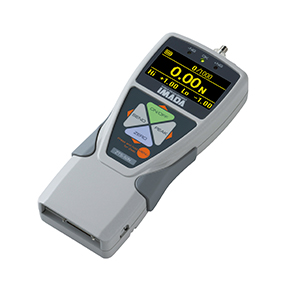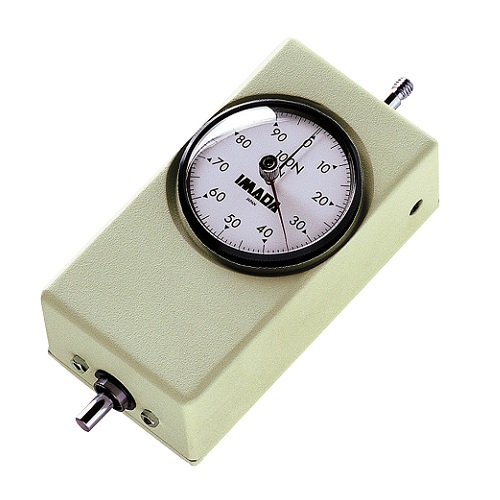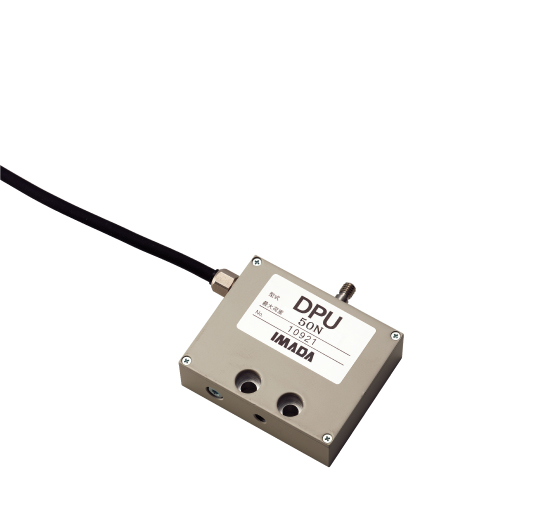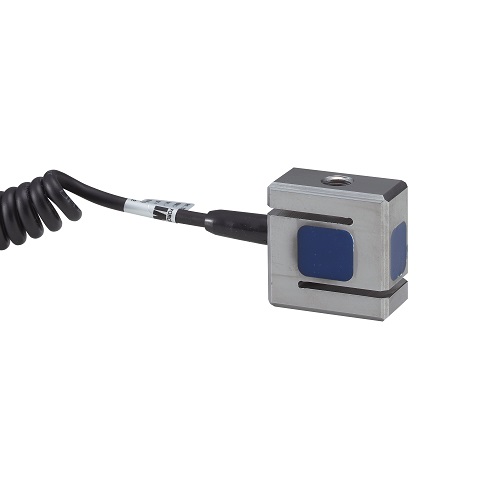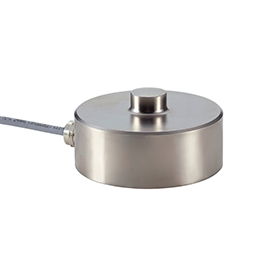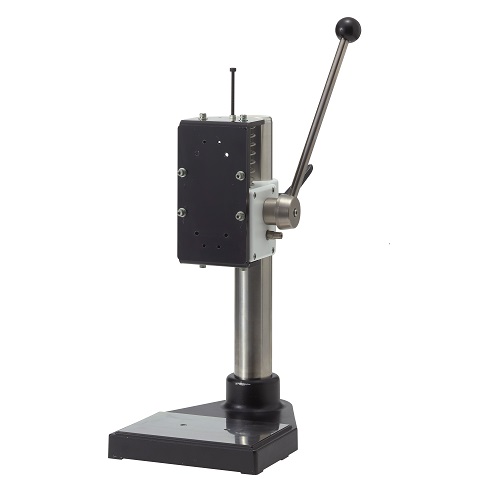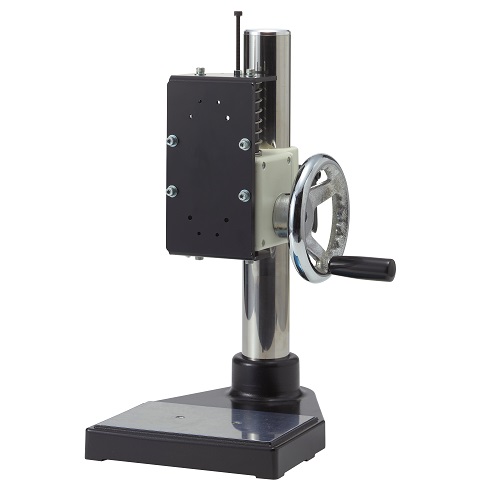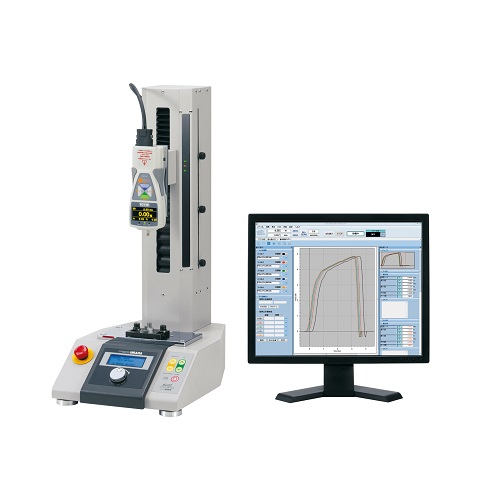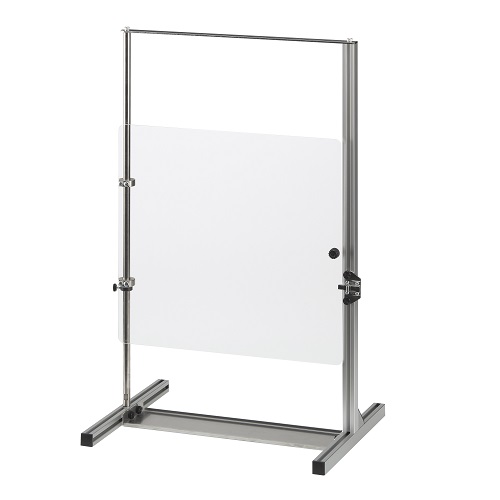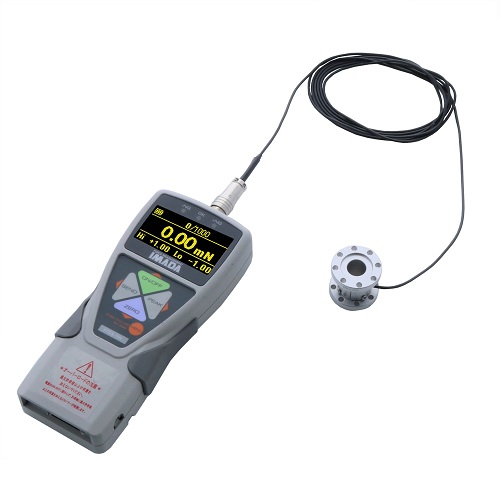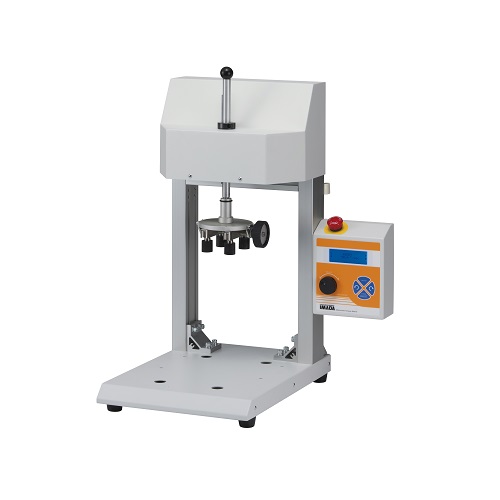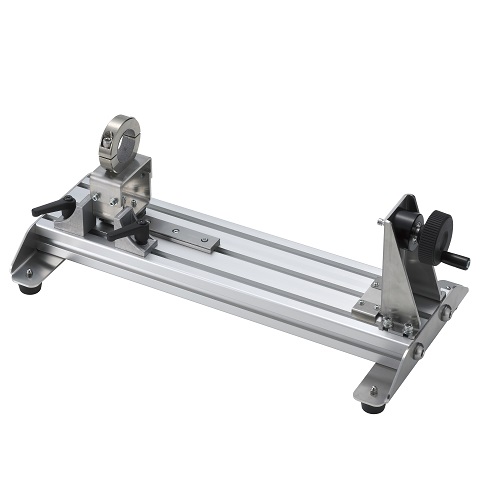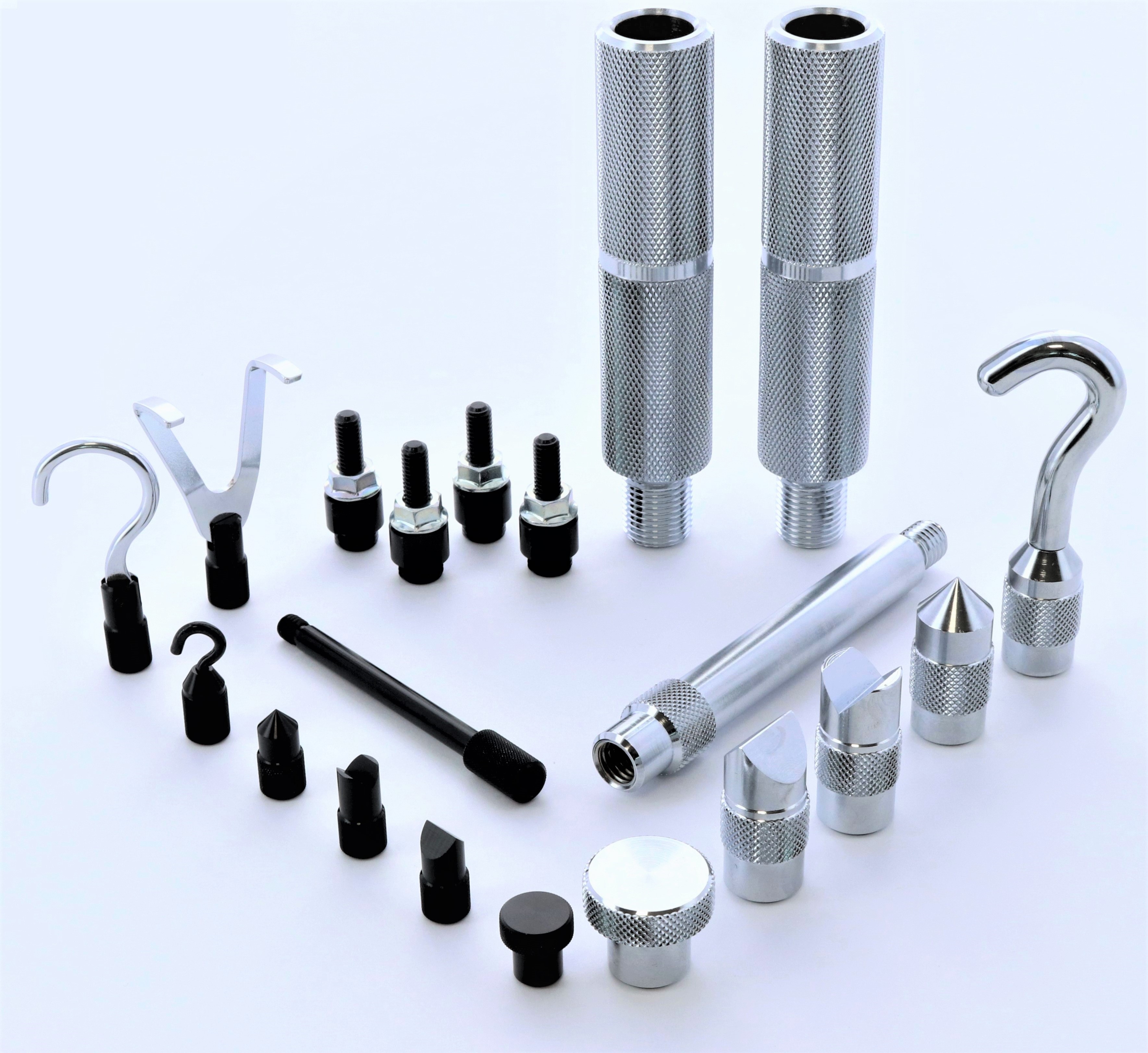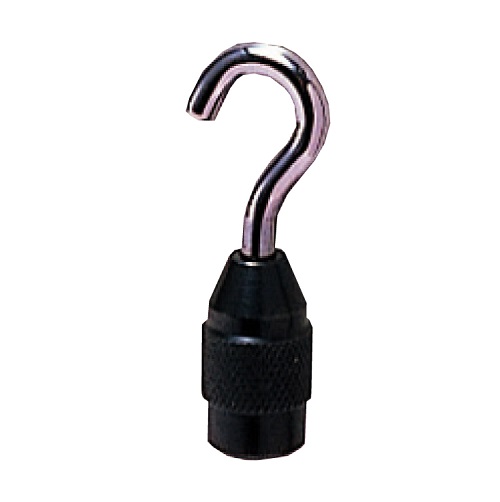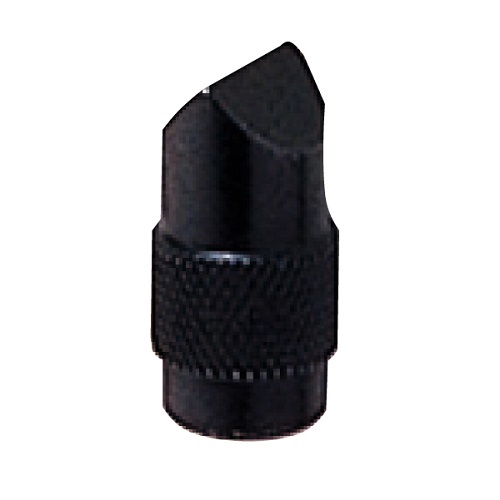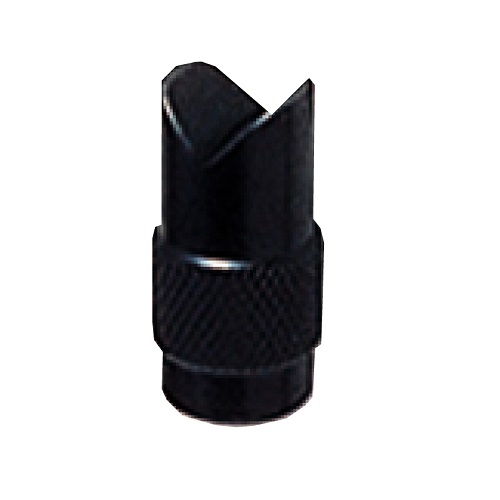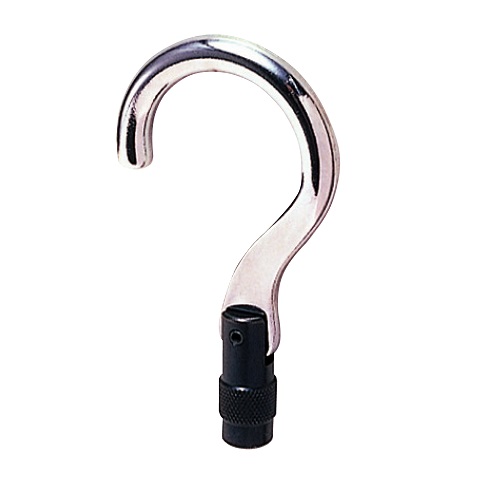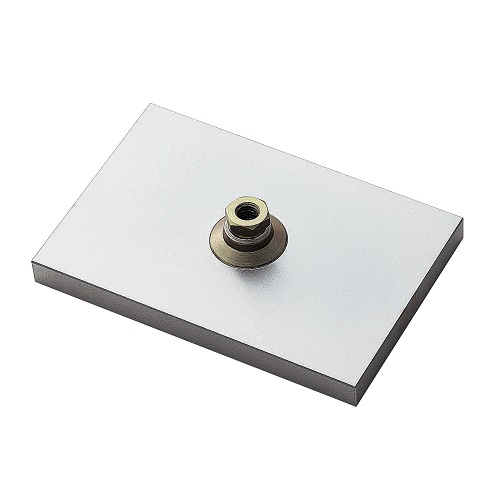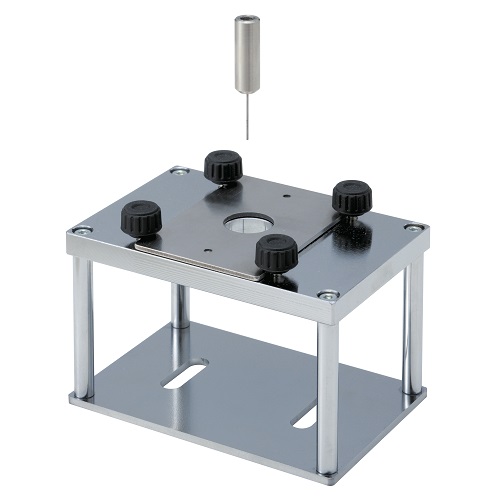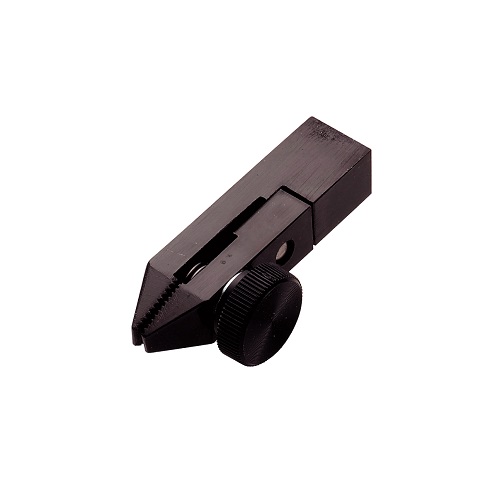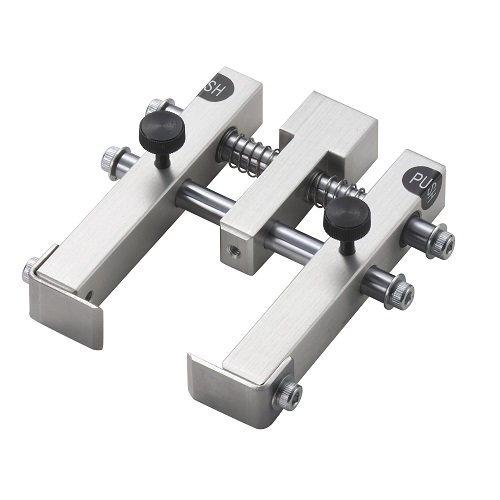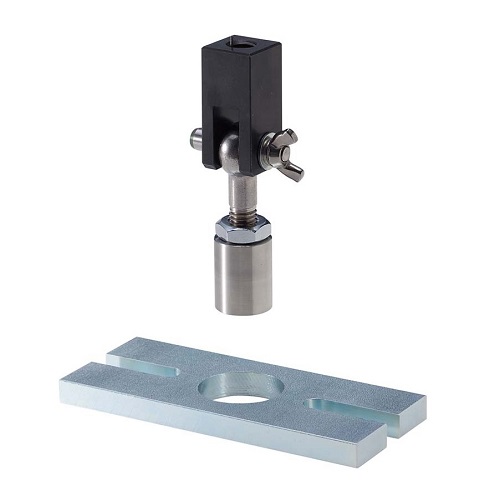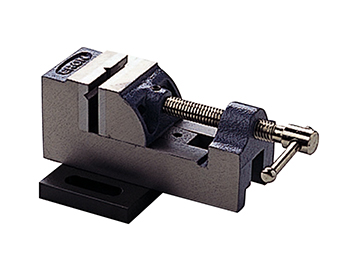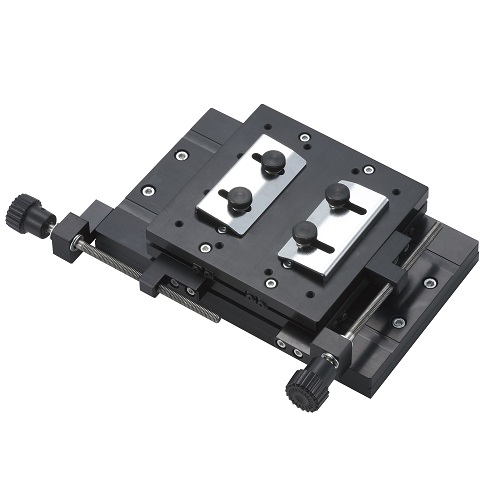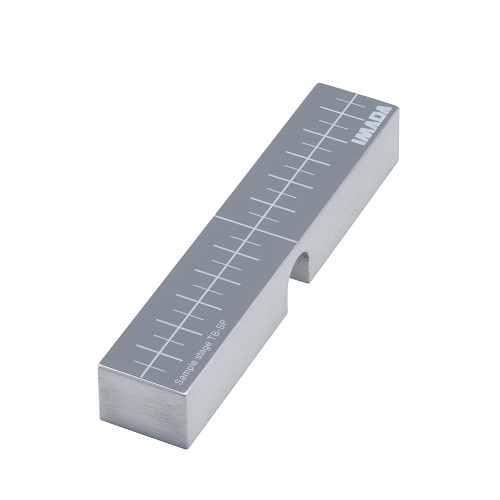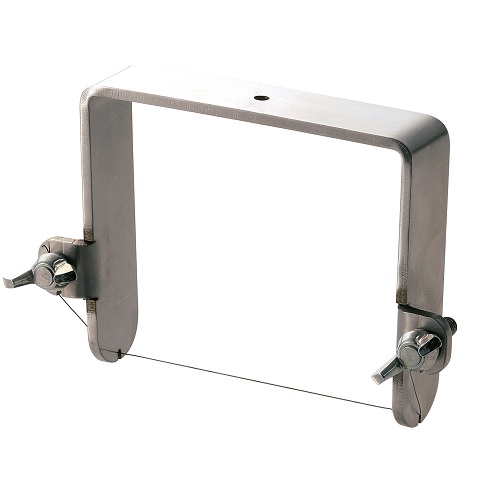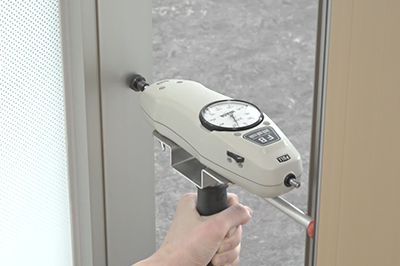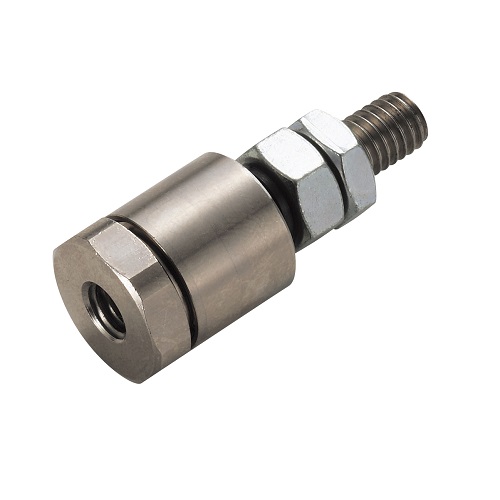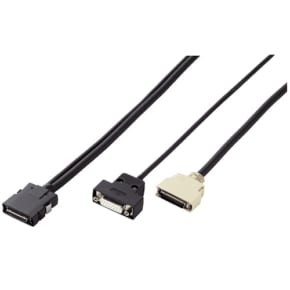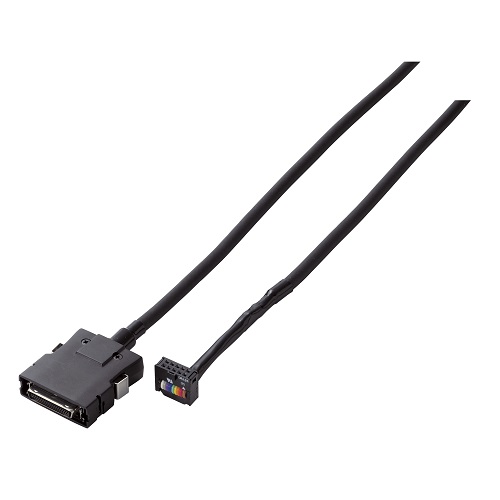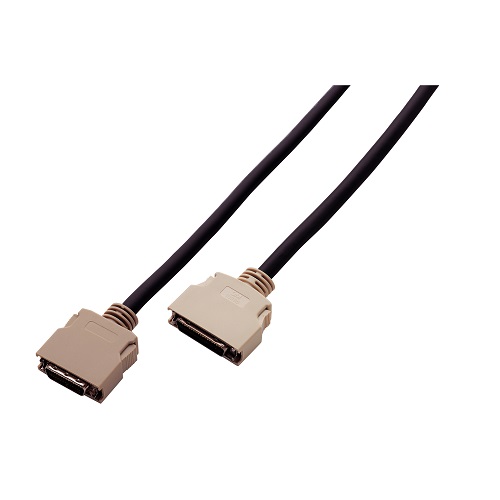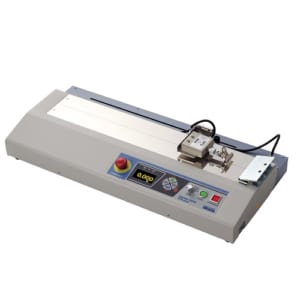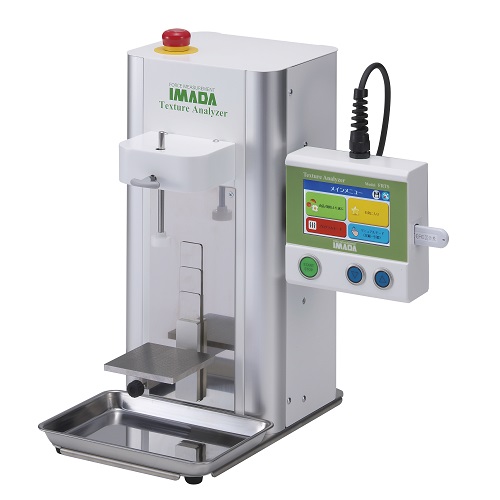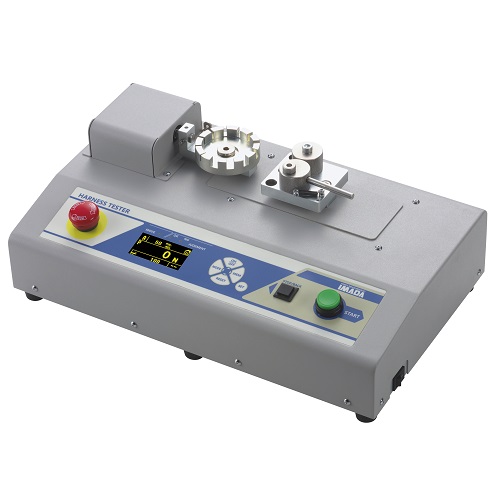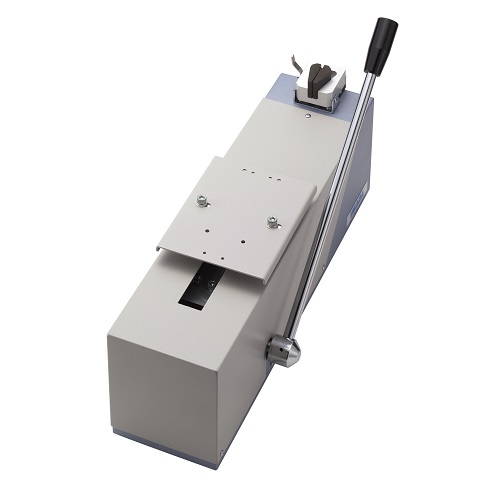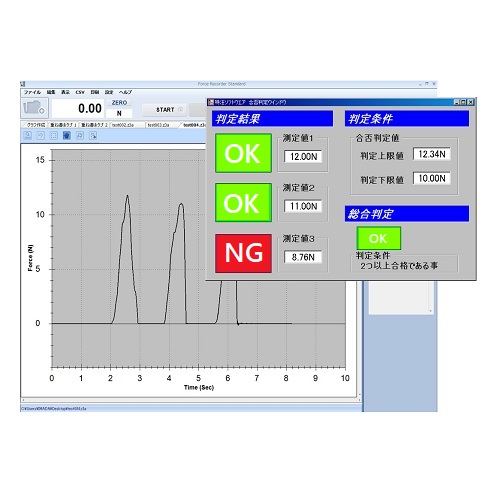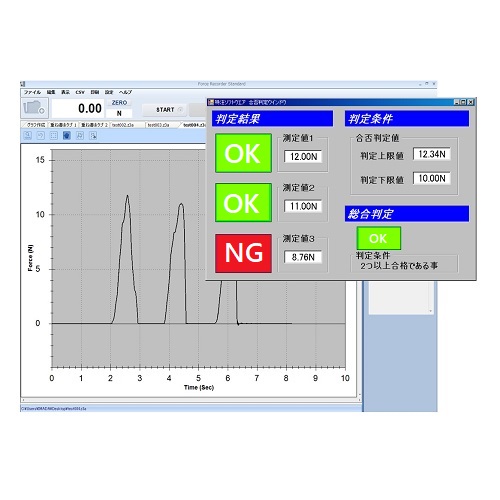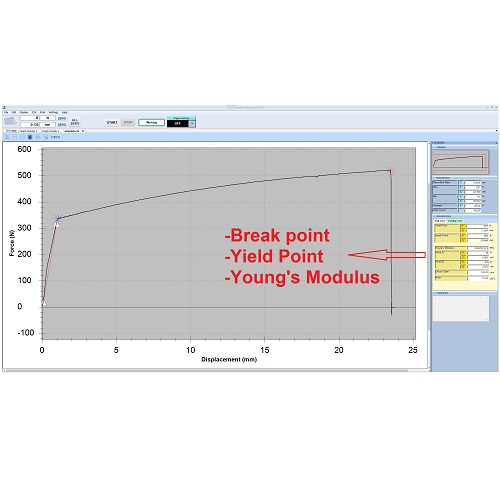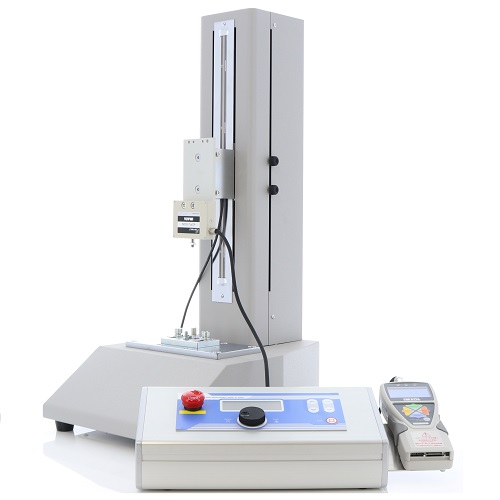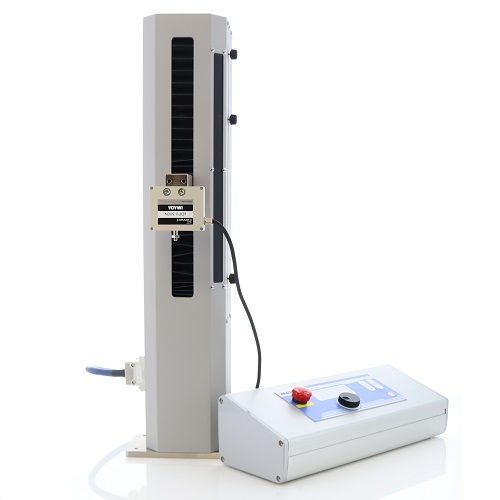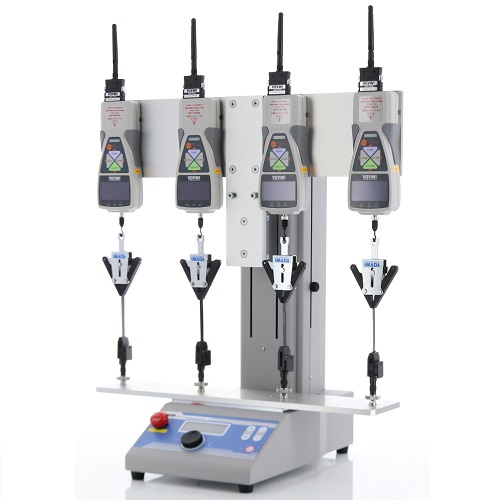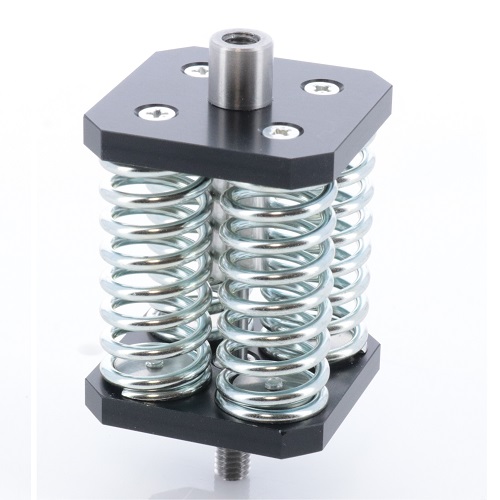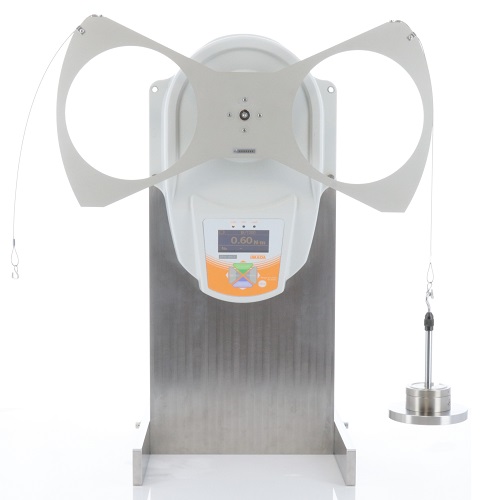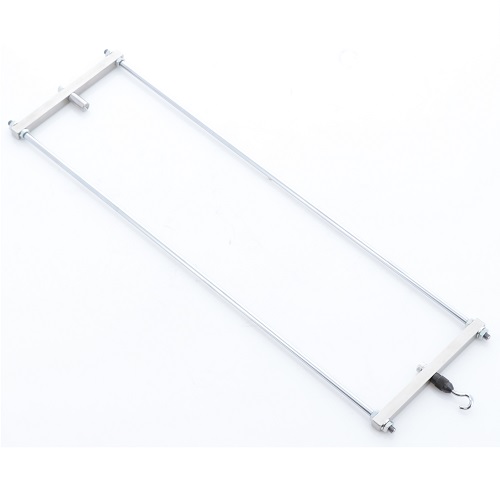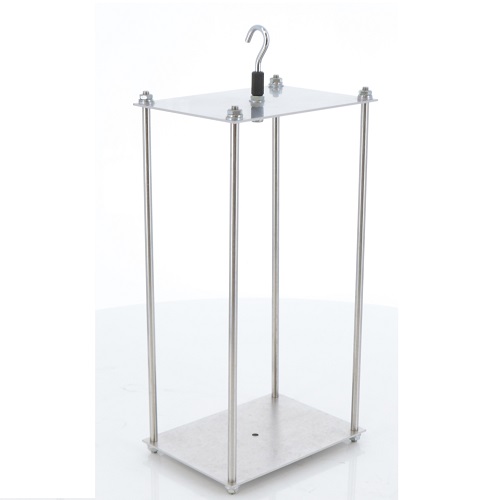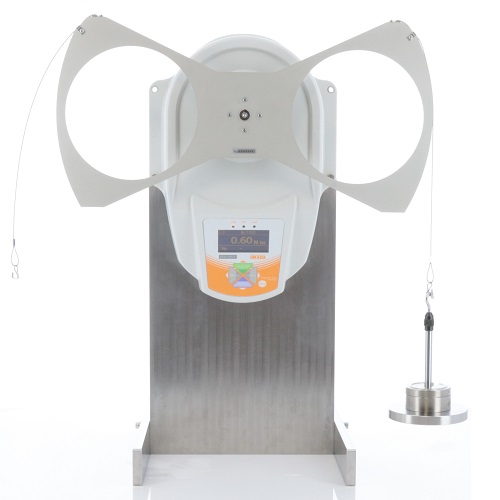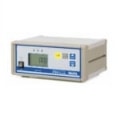Product Search
Solution Search
Searchable by product name, product model or standard.
When searching by product model, enter the product model excluding the option code (-FA, -L, -NEXT, etc.).
*To search by solution, switch to “solution search.”
i.e., Load Cells, ZTA-50N, 7864 (for ISO 7864)
Searchable by you force type, industry, standard or product sample.
*To search by product, switch to “product search.”
i.e., Compression, 7864 (for ISO 7864)
SEARCH

How to Measure Force?
- Force Measurement IMADA
- SOLUTIONS
- How to Measure Force?
How to Measure Force?

Force measurement is to express the force (force = load) generated by contact using a measuring device such as a force gauge. Force measurement unit is N, kgf, or lbf (see the details of unit>). Since there are several types of forces depending on the direction of the applied force and other factors, measurement is performed in a manner corresponding to each type.
As described in the "Force (Power)" section, force is generated in various situations in our daily lives, so force values are measured as one of the indicators to check the usability, safety, and taste of products and items that we come in contact with in our daily lives. For example, if the force value of the packaging material used to break a bag of pastries is too high, it requires a lot of force to break it, making it inconvenient to eat, while if it is too low, it can be easily broken, increasing the risk of damage during transportation. Also, the bread itself can be measured by measuring the force value when it is pressed, and the texture, such as "fluffy" or "chunky", can be seen in the numerical values. See usages example videos>
A force gauge is a typical measuring device for such force measurement. A force gauge is a tool to quantify and express the generated force in an appropriate unit. By using force gauges together with attachments or stands that are appropriate for the force to be measured, various forces such as mechanical strength due to breakage or deformation of materials, sensation of hardness or softness, operating force and functionality of switches and brakes, etc. can be measured as data. While using such measuring equipment, force measurement is widely used mainly in quality control, research and development, training, and other situations.
Force Gauge Overview
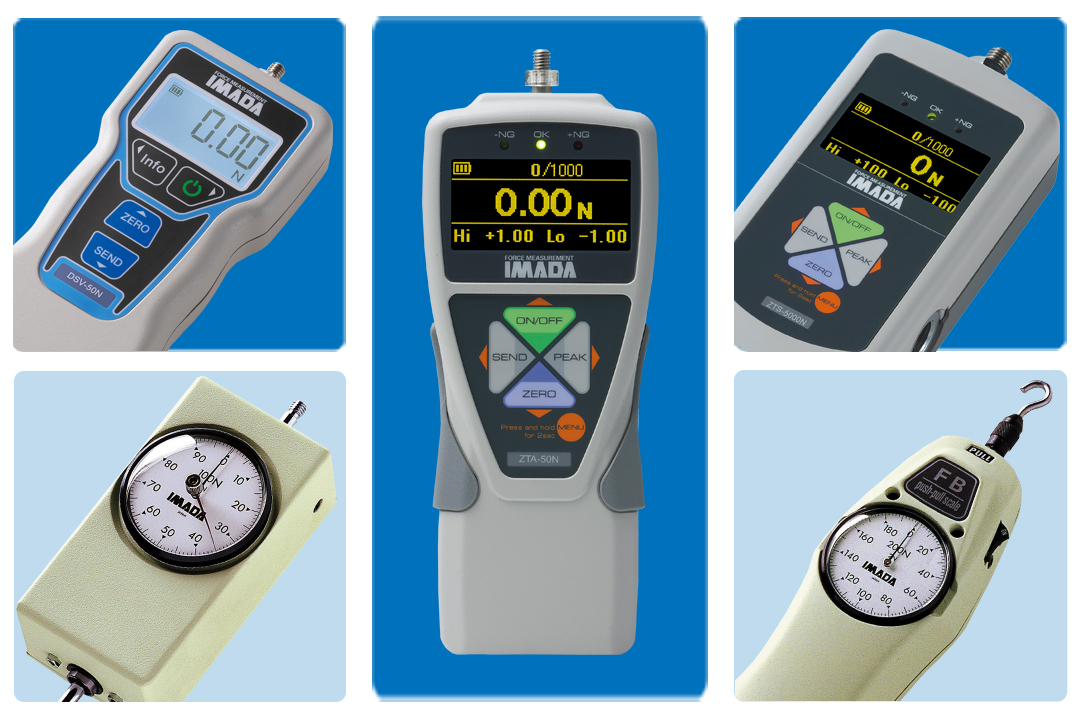
Force gauges, also known as "push-pull gauge" or "push-pull scale" are measuring equipment that measures the load (force) acting on a sample. They can measure tension, compression, bending, shear, as well as peel, adhesion, and friction. They are popular in manufacturing and play critical role in quality control and R&D, such as evaluation of mechanical properties of materials (strength, hardness, toughness, or durability), verification of safety and operability of parts and products, and compliance with industry standards.
Force gauges support our daily lives, such as automobiles, home appliances, food and packaging, medical equipment, stationery, and furniture. See usage examples in each industiry >
See the complete lineup of force gauges: List of all force gauges >
Load Cell Overview

Load Cells, also known as "Load Transducers" or "Load Sensors" are sensor that detects force or torque and converts its magnitude into an electrical signal.
They come in various shapes, such as beam, coin, or S-shape, and can be used for measurement in small spaces or built into specific equipment. There are also particular types with shapes suitable for unique samples such as vehicle handbrakes or footbrakes. Some can be used even in harsh environments such as high/low temperatures, high dust, or exposure to water.
They can be connected to a dedicated amplifier (display unit) to quantify and display the measurement results. Measurement data and pass/fail test value signals can be simply output, allowing for easy management of data, and interlocking of measurement results with equipment.
Although they are rarely seen in everyday, they are used in a variety of production facilities as fundamental. They support our daily lives, i.e., in the form of strength test and operability evaluation of automobile assembly parts and finished car bodies.
See the complete lineup of load cells: List of all load cells >
Test Stand Overview

Test stands are supplementary products for force measurement to move a force gauge either vertically or horizontally.
Combined with a force gauge and attachments, they can be used as simple desktop force tester for more precise measurement. Unlike handheld measurement, they push and pull the force gauge to make the test speed and direction uniform, thus materializing highly repeatable measurement.
It is also useful when you measure large forces or for small displacements.
Switch-operated motorized types and handle/lever-operated manual types are available to suit your needs.
See the complete lineup of test stands: List of all test stands >
Torque Tester Overview

Torque is the torsional moment (turning or twisting force) that acts on an object when it rotates, and the device that measures torque is Torque Tester. Torque testers can be used to measure opening and closing force, turning force, and sliding resistance.
Torque measurement is popular, from the torsional strength of circuit boards, the tightening force of screws, the opening force of PET bottles and jars, and the operating force of rotary switches and keys, as a few examples.
Also commonly used to evaluate the safety and the operability of such parts and products, conform to industry standards. It is one of the most important measuring instruments supporting quality control and research and development.
See the complete lineup: List of all torque gauges (torque testers) >
Torque Test Stand Overview

Torque Test stands are rotating equipment for torque testers. Combined with a torque gage and attachments, it can be used as a simple torque tester to achieve more precise measurements.
Unlike hand-held measurement, they can perform the rotation movement or fix the sample. This reduces shake of manual operation and equalizes the test speed, consequently delivering highly repeatable measurements. Rotating the test object more than 360 degrees or continuous rotating can be easily conducted.
A switch-operated motorized type, a manual type with a knob, or a holder to fix the sensor will meet the various torque measurement needs.
See the complete lineup: List of all torque test stands >
Attachment Overview

An attachment is a jig that is attached to a test stand or a test stand of a force gauge. Since it is the part of the attachment that actually contacts the sample to be measured, the attachment is a very important element in force measurement.
A force gauge can be used to measure compression force by attaching an attachment for compression test, and can measure tension force by replacing it with an attachment for tension test. In other words, a force gauge can read a force value, but the type of force to be measured is determined by the attachment, not the force gauge.
Even for a single compression test, there are various types of compression tests, such as a pressure test in which a force is applied to the entire test sample, or a puncture test in which a force is applied locally.
In order for a force gauge to properly measure your desired force, you need an attachment that is suitable for the purpose. It would not be an exaggeration that "the right attachment" is the most important factor in force measurement. Therefore, IMADA has continued to develop attachments to meet the measurement needs of our customers, and the number of types of attachments has been continuously increasing. We have reached the point where we offer over 230 types attachments as regular items.
with custom-made attachments, we manufacturer more than 300 types of attachments annually. The possibilities for force measurement is infinite, and the world of attachments is endlessly wide and deep, although it may seem small and inconsiderable.
See the complete lineup of attachments: List of all attachments>
Converter
Convenient Unit/Torque/
Tension conversion
6 Significant Digits (*Significant digits are meaningful digits that do not include zeros, which are used to indicate the scale.)
Products

HERE!
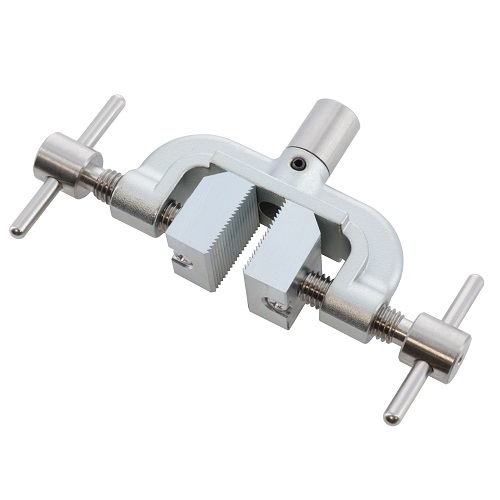 Attachments, Grips & Fixtures
Attachments, Grips & Fixtures
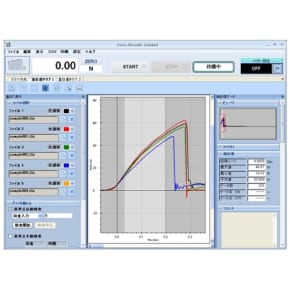 Software / Download Card
Software / Download Card
 Additional Chargeable Function for Software
Additional Chargeable Function for Software
 Friction Testing Module
Friction Testing Module
 Peel Testing Module 1
Peel Testing Module 1
 Switch Operating Force Testing Module
Switch Operating Force Testing Module
 Pressure/Stretchability Measurement Module
Pressure/Stretchability Measurement Module
 Spring Rate Measurement Module
Spring Rate Measurement Module
 Deflection Correction Function
Deflection Correction Function
 Bending Stress Measurement Module
Bending Stress Measurement Module
 Excel Data Writing Function
Excel Data Writing Function
 Yarn Tenacity Testing Module
Yarn Tenacity Testing Module
 Multi-Peak Extraction Function
Multi-Peak Extraction Function
 Multi-Level Evaluation Function
Multi-Level Evaluation Function
 Custom Made
Custom Made
 Measurements in Special Environment
Measurements in Special Environment
 Temperature and Angle Adjustable Peel Tester
Temperature and Angle Adjustable Peel Tester
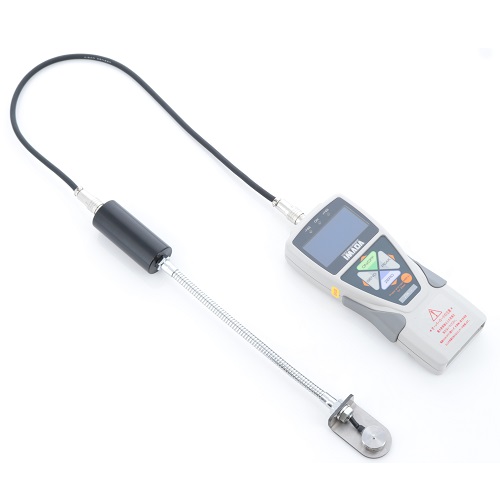 Spot Welding Pressure Gauge
Spot Welding Pressure Gauge
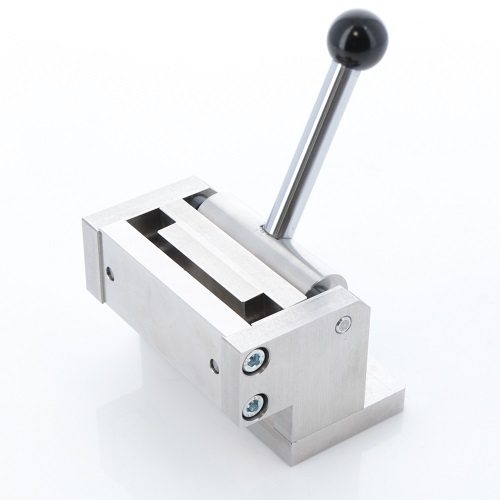 Attachment to Bend Sample 90 Degrees
Attachment to Bend Sample 90 Degrees
 Horizontal Test Stand with Fine Adjustment Knob
Horizontal Test Stand with Fine Adjustment Knob
 Tester With Thermostatic Chamber
Tester With Thermostatic Chamber
 Tester With Far-infrared Heater
Tester With Far-infrared Heater
 Table for Compression Load Cell
Table for Compression Load Cell
 Test Stand for Testing at the Desired Position
Test Stand for Testing at the Desired Position
 Particular Samples Measurements
Particular Samples Measurements
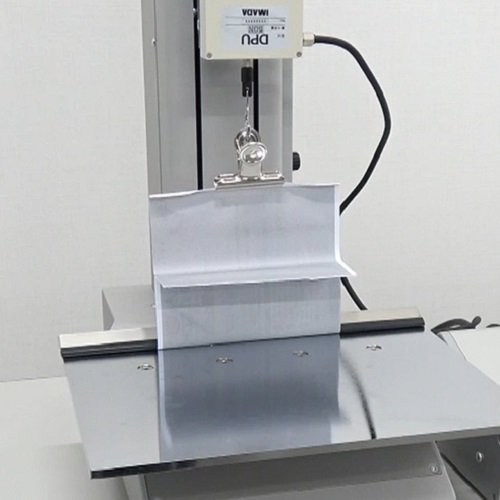 Peel Test Fixture for Crimped Postcard
Peel Test Fixture for Crimped Postcard
 Attachment for Fixing Wide and Thin Materials
Attachment for Fixing Wide and Thin Materials
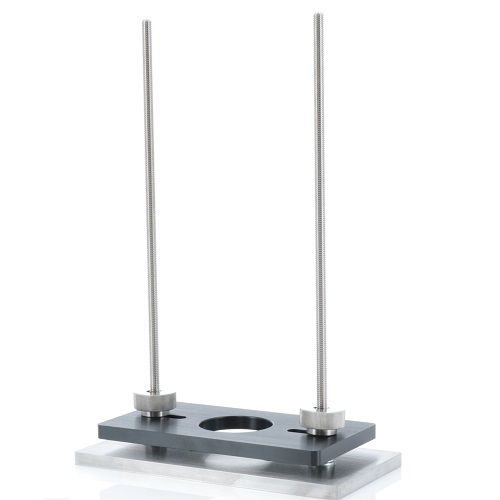 Attachment for Wine Cork Extraction Test
Attachment for Wine Cork Extraction Test
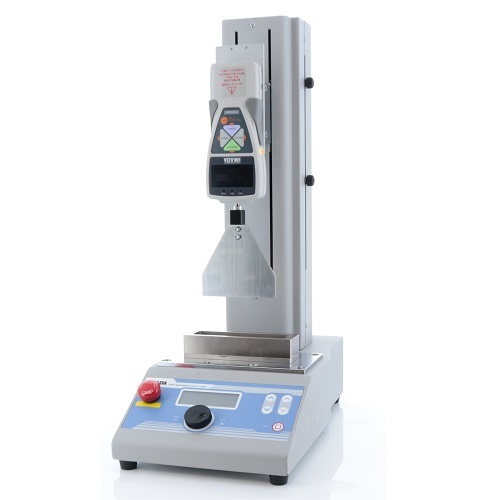 Attachments for 90 degree score bend test
Attachments for 90 degree score bend test
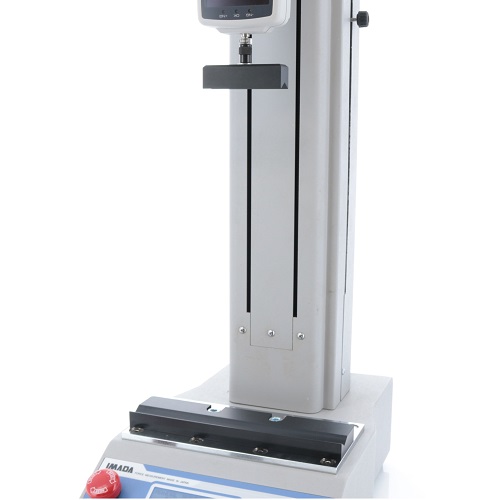 Attachments to measure forces to open flat pack carton
Attachments to measure forces to open flat pack carton
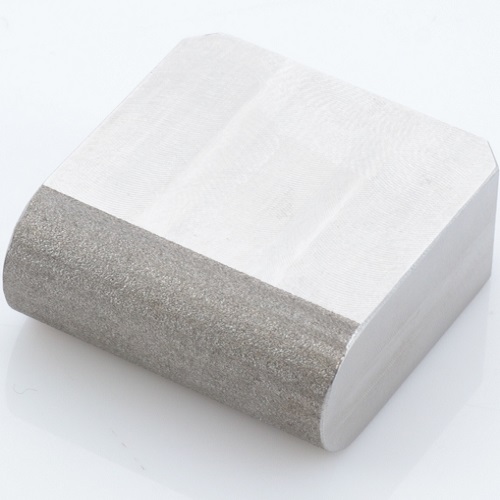 Attachments for break strength testing of lipsticks or lip balms
Attachments for break strength testing of lipsticks or lip balms
 High capacity dual-column motorized test machine for compression test
High capacity dual-column motorized test machine for compression test
 Film Grip with Openable Gripping Part
Film Grip with Openable Gripping Part
 Pantograph Grip with Pressurization Mechanism
Pantograph Grip with Pressurization Mechanism
 Motorcycle Accelerator Torque Test Fixture
Motorcycle Accelerator Torque Test Fixture
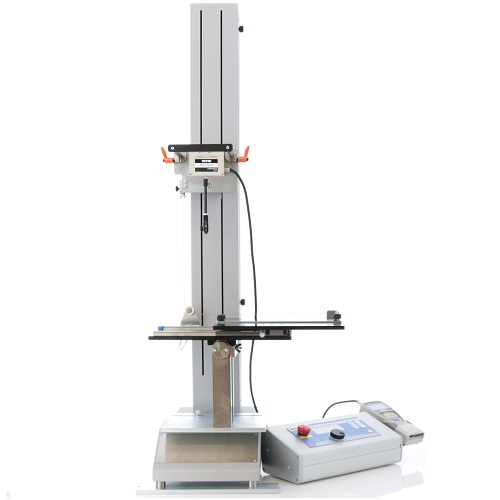 Peel Test Fixture for Solar Cell Ribbon
Peel Test Fixture for Solar Cell Ribbon
 Test Stand With Large Table
Test Stand With Large Table
 Compression Test Attachment for LCD Panel
Compression Test Attachment for LCD Panel
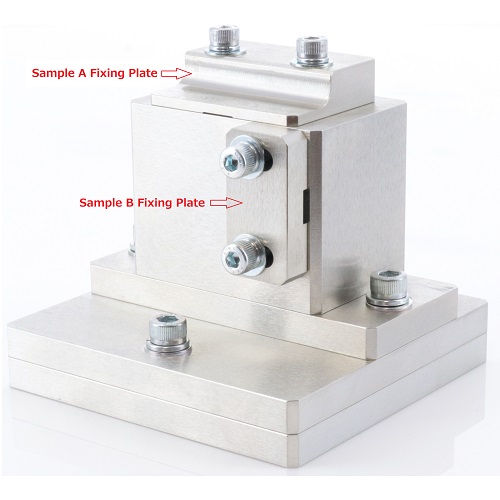 L-shaped Sample Fixture
L-shaped Sample Fixture
 Attachment for Opening/Closing Force Test of Takeout Container Lid
Attachment for Opening/Closing Force Test of Takeout Container Lid
 Attachment for Squeezing Force Test of Eye Drop Bottles
Attachment for Squeezing Force Test of Eye Drop Bottles
 Compression Test Attachment for Squeeze Tube
Compression Test Attachment for Squeeze Tube
 Attachment for Welded Nut Tension Test
Attachment for Welded Nut Tension Test
 Attachment for Tube Tension Strength Test
Attachment for Tube Tension Strength Test
 Attachment for Hard-to-Grip Samples
Attachment for Hard-to-Grip Samples
 Attachment for Compression Test of Nasal Spray
Attachment for Compression Test of Nasal Spray
 Individually Adjustable Torque Chuck Attachment
Individually Adjustable Torque Chuck Attachment
 Resistance Force Measurement jig for Hair Combing Test
Resistance Force Measurement jig for Hair Combing Test
 Attachment for Lateral Compression Test of Cup Containers
Attachment for Lateral Compression Test of Cup Containers
 Water-Proof Shield for Motorized Torque Test Stand
Water-Proof Shield for Motorized Torque Test Stand
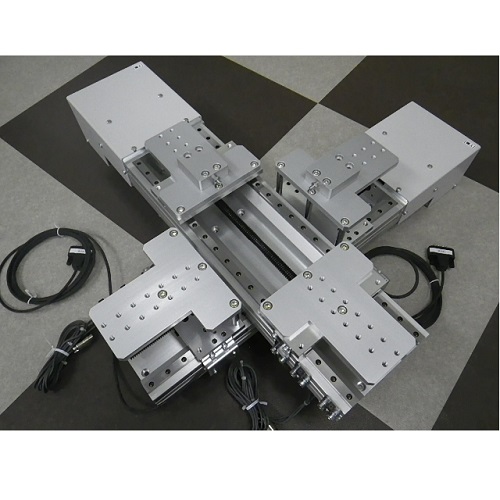 Biaxial Tension Tester
Biaxial Tension Tester
 Resize & Modification
Resize & Modification
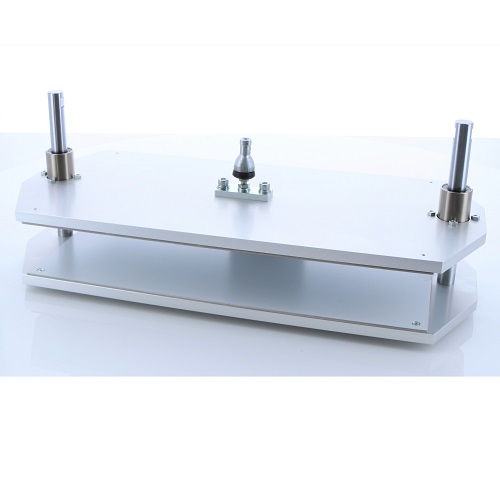 Press Test Fixture (Wide Size)
Press Test Fixture (Wide Size)
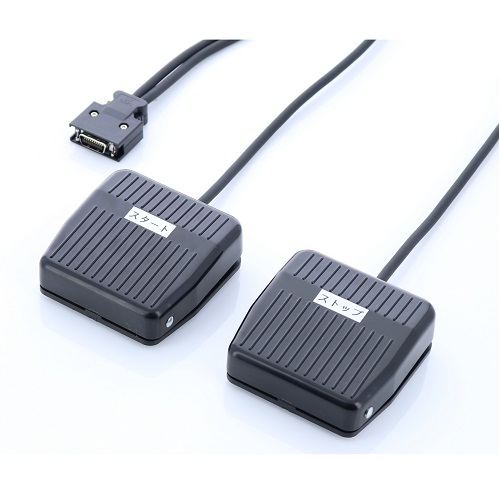 Remote Control Switch for Motorized Test Stand
Remote Control Switch for Motorized Test Stand
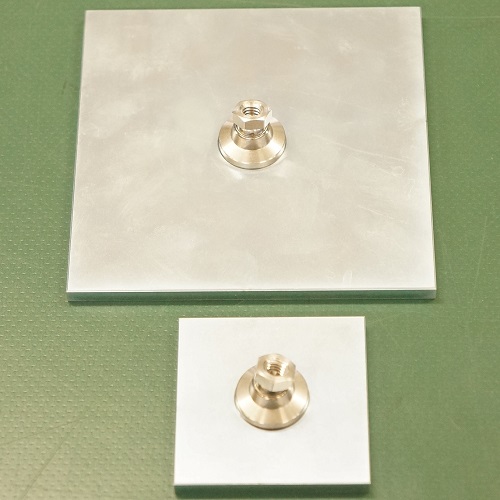 Semi-Customized Compression Attachments
Semi-Customized Compression Attachments
 Large Size of Compression Tester
Large Size of Compression Tester
 Large Size of 90 Degree Peel Tester
Large Size of 90 Degree Peel Tester
 Force Control Cable with Signal Output Box
Force Control Cable with Signal Output Box
 Manual Test Stand with Displacement Output Option
Manual Test Stand with Displacement Output Option
 Cutting Base Plate with groove and knife edge probe
Cutting Base Plate with groove and knife edge probe
 Upper attachment for 4-point bending test
Upper attachment for 4-point bending test
 Main shaft stopper with a butterfly screw for MTS series
Main shaft stopper with a butterfly screw for MTS series
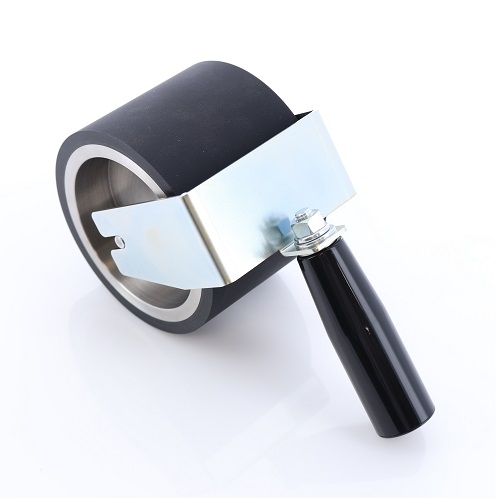 Wide Rubber Roller for Peel Test
Wide Rubber Roller for Peel Test
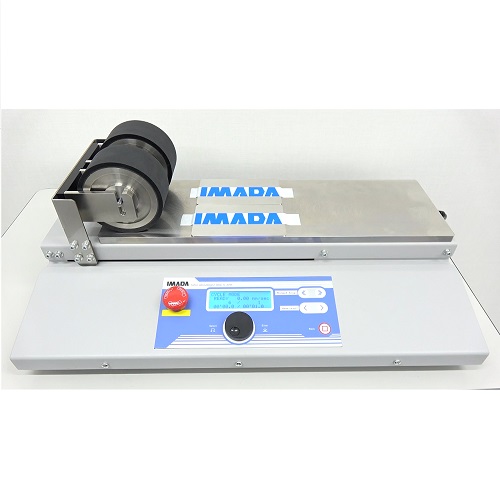 Motorized Rubber Roller for Peel Test
Motorized Rubber Roller for Peel Test
 Peel Fixture for Packaged Cooked Rice Lid
Peel Fixture for Packaged Cooked Rice Lid
 Cam grip with spring
Cam grip with spring
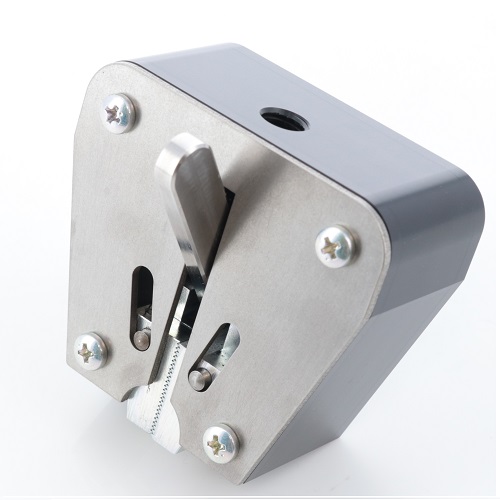 Wedge Grip Without Adaptor
Wedge Grip Without Adaptor
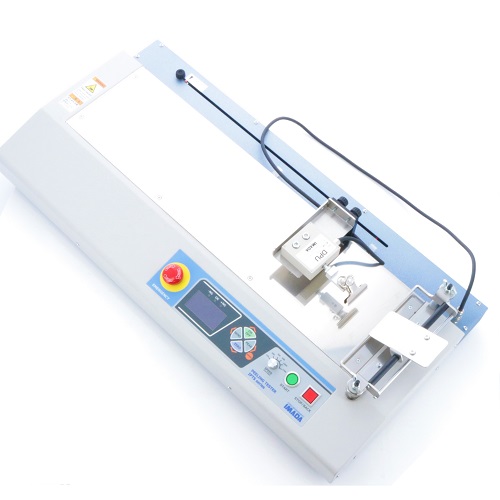 Customized Peeling Tester
Customized Peeling Tester
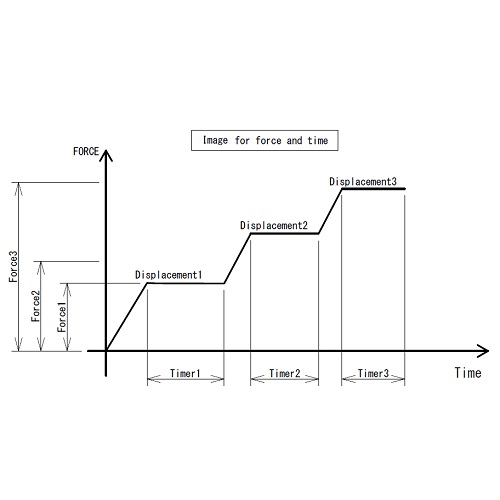 Test Stand with 3-stage Force/Displacement setting/holding function
Test Stand with 3-stage Force/Displacement setting/holding function
 Torque Stand Shaft for Child Proof Lock Measurement
Torque Stand Shaft for Child Proof Lock Measurement
 90 degree Peel Test Jig (High Capacity Type)
90 degree Peel Test Jig (High Capacity Type)
 Tabletop Force Gauge Calibration Unit (High Capacity Type)
Tabletop Force Gauge Calibration Unit (High Capacity Type)
 One-touch toggle clamp for Coefficient of Friction Fixture
One-touch toggle clamp for Coefficient of Friction Fixture
 Compact Motorized Test Stand
Compact Motorized Test Stand
 Tube Fixing Jig
Tube Fixing Jig
 Visualized Film Chuck
Visualized Film Chuck
 Tensile and Compression Torque Tester
Tensile and Compression Torque Tester
 Standards-Compliant Measurement
Standards-Compliant Measurement
 ISO 14704: 2000 Fine Ceramics 4-Point Bend Tester
ISO 14704: 2000 Fine Ceramics 4-Point Bend Tester
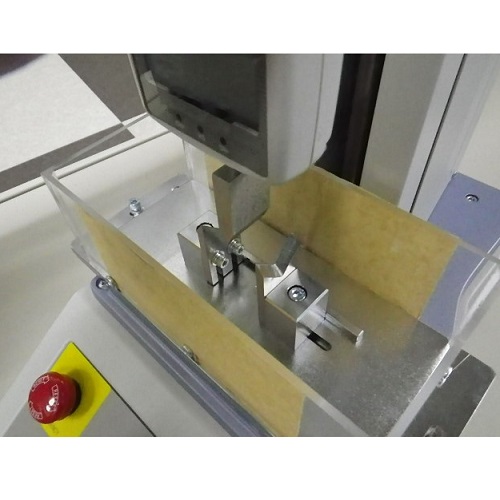 Ampoule 3-Point Bend Tester
Ampoule 3-Point Bend Tester
 ISO/IEC 10373-1: 2006 Peel Tester of Identification Card
ISO/IEC 10373-1: 2006 Peel Tester of Identification Card
 ISO 17480: 2015 Peel Tester for Gable-Top Package
ISO 17480: 2015 Peel Tester for Gable-Top Package
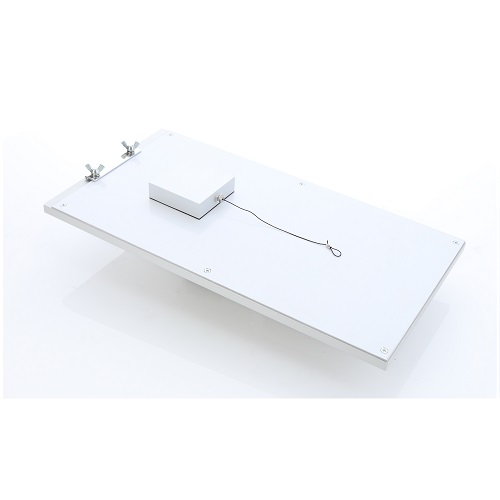 ASTM D1894: 2014 Coefficient of Friction (COF) Tester
ASTM D1894: 2014 Coefficient of Friction (COF) Tester
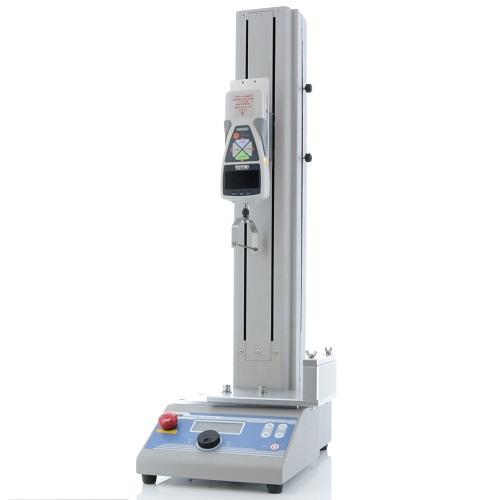 Attachments for score bend test
Attachments for score bend test
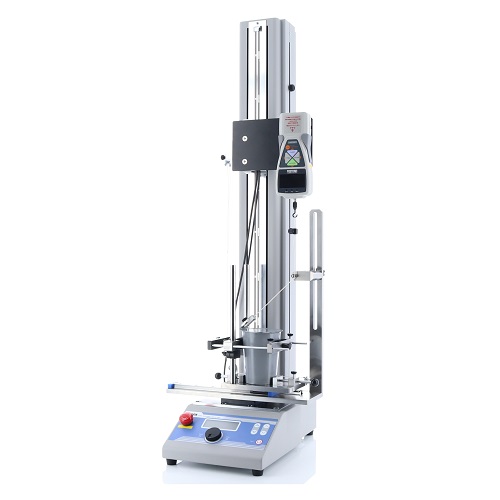 ISO 17480: 2015 45 Degree Complete Peel Test Fixture for Container Lid
ISO 17480: 2015 45 Degree Complete Peel Test Fixture for Container Lid
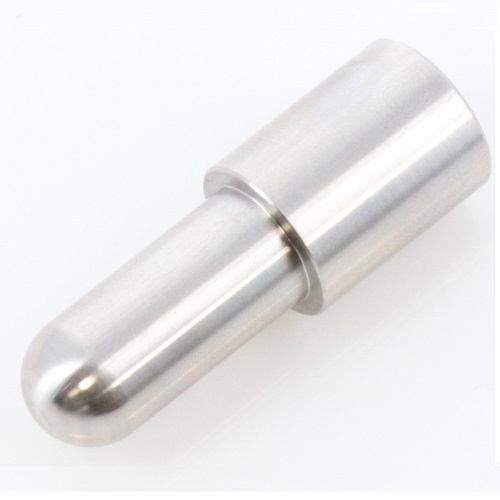 IEC 61010-1 (2010) Spherical Jig for Compression Testing
IEC 61010-1 (2010) Spherical Jig for Compression Testing
 ASTM D4032(Withdrawn 2025)Standard Test Attachment for Fabric Stiffness by Circular Bend Procedure
ASTM D4032(Withdrawn 2025)Standard Test Attachment for Fabric Stiffness by Circular Bend Procedure
 Peel Test Jig for Gable-Topped Package (No sample cut type)
Peel Test Jig for Gable-Topped Package (No sample cut type)







